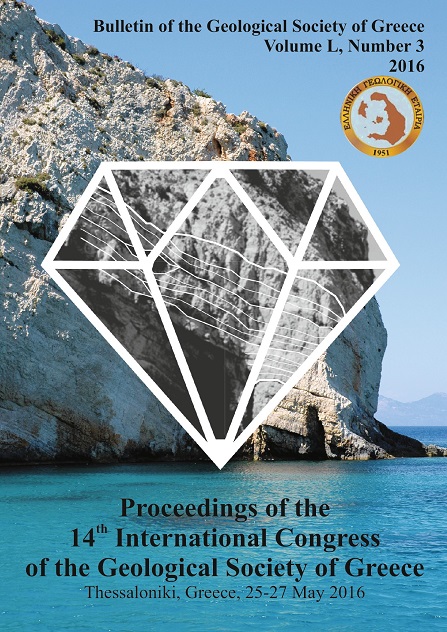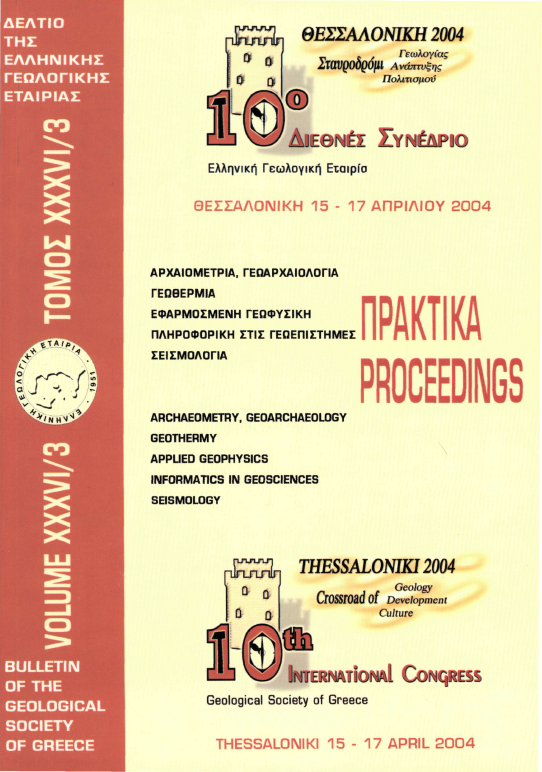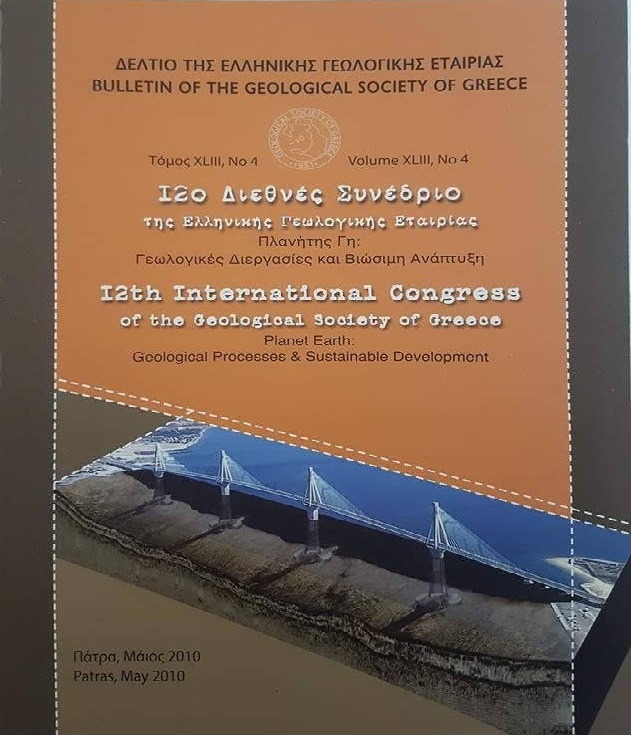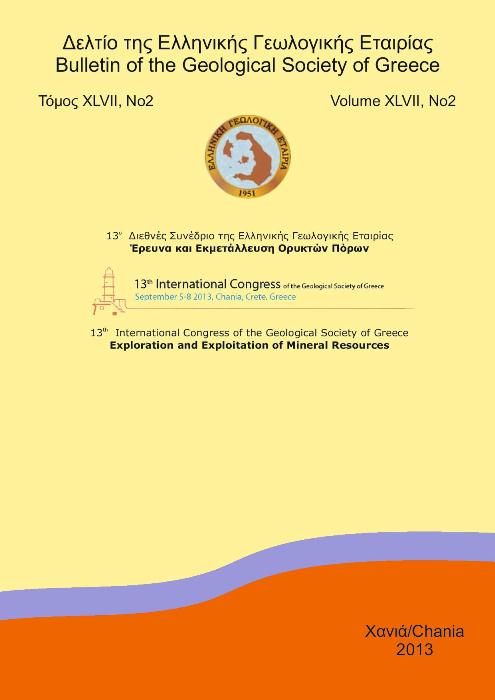SEISMOGENIC SOURCES IN THE AEGEAN AREA AND THEIR PREDICTIVE PROPERTIES

Περίληψη
Με βάση όλα τα διαθέσιμα δεδομένα ορίζονται οκτώ κυκλικές σεισμογόνες πηγές στην ευρύτερη περιοχή του Αιγαίου. Η ακριβής θέση του κέντρου κάθε πηγής βελτιώνεται με την διερεύνηση της οιωνεί-περιοδικής γένεσης ισχυρών (M≥6.0) επιφανειακών (h 100km) κύριων σεισμών που έγιναν στο διάστημα 1911-2014. Στις ίδιες σεισμογόνες πηγές έγιναν και όλοι οι κύριοι σεισμοί με μεγέθη M≥6.3 στο διάστημα 1850-2014. Οι χρόνοι επανάληψης των σεισμών και στους δύο πλήρεις καταλόγους, μετά από κατάλληλη απο-ομαδοποίηση, βρέθηκε ότι έχουν προγνωστικές ιδιότητες που εκφράζονται στο μοντέλο TIMAPR (Time and Magnitude Predictable Regional model). Παρόμοιες ιδιότητες έχουν και οι προσεισμοί πρόσφατων κύριων σεισμών, οι οποίες εκφράζονται στο μοντέλο D-AS (Decelerating-Accelerating Seismicity model). Από την αναδρομική πρόγνωση του τελευταίου κύριου σεισμού σε κάθε μια από τις οκτώ περιοχές με την εφαρμογή και των δύο μοντέλων, προκύπτουν αποδεκτές τιμές σφαλμάτων στον χρόνο γένεσης, το επίκεντρο και το μέγεθος. Επιπρόσθετα, χρησιμοποιήθηκαν δεδομένα ως το τέλος του 2014 με στόχο την πρόγνωση πιθανώς επερχόμενου κύριου σεισμού σε κάθε μία από οκτώ πηγές, καθώς και την αναγνώριση του ρήγματος στο οποίο πιθανώς αυτός θα γίνει.
Λεπτομέρειες άρθρου
- Πώς να δημιουργήσετε Αναφορές
-
Papazachos, B., Karakaisis, G., Scordilis, E., & Papaioannou, C. (2016). SEISMOGENIC SOURCES IN THE AEGEAN AREA AND THEIR PREDICTIVE PROPERTIES. Δελτίο της Ελληνικής Γεωλογικής Εταιρείας, 50(3), 1222–1231. https://doi.org/10.12681/bgsg.11828
- Ενότητα
- Γεωφυσική και Σεισμολογία

Αυτή η εργασία είναι αδειοδοτημένη υπό το CC Αναφορά Δημιουργού – Μη Εμπορική Χρήση 4.0.
Οι συγγραφείς θα πρέπει να είναι σύμφωνοι με τα παρακάτω: Οι συγγραφείς των άρθρων που δημοσιεύονται στο περιοδικό διατηρούν τα δικαιώματα πνευματικής ιδιοκτησίας επί των άρθρων τους, δίνοντας στο περιοδικό το δικαίωμα της πρώτης δημοσίευσης. Άρθρα που δημοσιεύονται στο περιοδικό διατίθενται με άδεια Creative Commons 4.0 Non Commercial και σύμφωνα με την οποία μπορούν να χρησιμοποιούνται ελεύθερα, με αναφορά στο/στη συγγραφέα και στην πρώτη δημοσίευση για μη κερδοσκοπικούς σκοπούς. Οι συγγραφείς μπορούν να: Μοιραστούν — αντιγράψουν και αναδιανέμουν το υλικό με κάθε μέσο και τρόπο, Προσαρμόσουν — αναμείξουν, τροποποιήσουν και δημιουργήσουν πάνω στο υλικό.







